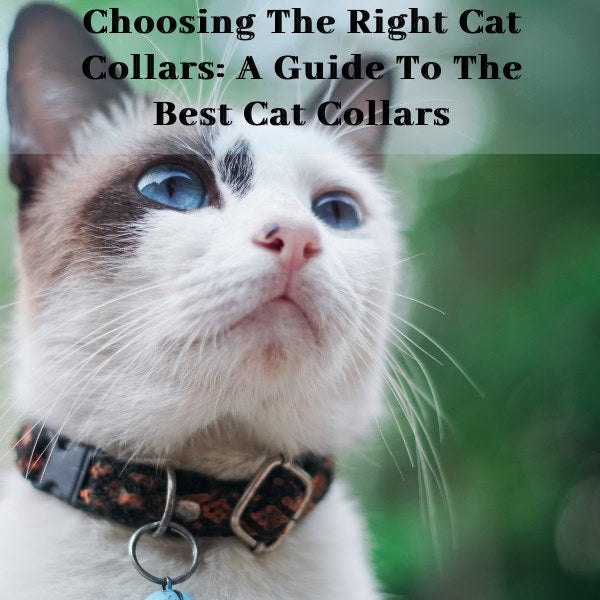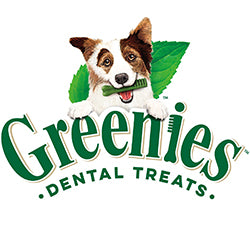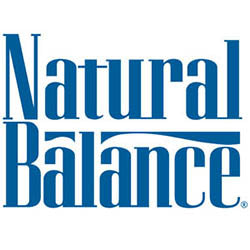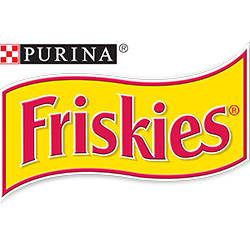
Choosing The Right Cat Collars: A Guide To The Best Cat Collars
Check, and you won't find any rule that mandates putting a collar on your cat. Then you can also think about how daunting it is to successfully wear your cat its first collar, mainly if it's a kitten or adult without previous experience of wearing one. These factors can make you hesitate to purchase a cat collar.
Maybe you have never thought about getting your indoor cat a collar. Nevertheless, cats can be tricky, and they may escape from time to time. In addition to buying a collar for your indoor cat, getting one for your outdoor cat is even more critical.
Making your life more difficult is the actual process of making a purchase decision you and your feline friend won't regret. But don't let any of these issues deter you from putting an ID tag and collar on your pet. There are instances that a collar could mean the difference between life and death, especially when your cat wanders off or goes missing.
As opposed to popular belief, cat collars do not pose any danger to cats. An ASPCA-cited study found that cat collars help animals who wander too far from home, get caught in difficult situations, or appear lost. It is more likely that cats wearing ID tags will be found and returned home than those who wander off without collars. It also makes sense to microchip your cat, so you will be able to prove that they are indeed yours if the cat gets mistaken for a stray or stolen.
Interestingly, there are different kinds of cat collars available on the market. GPS cat collars, for instance, can allow you to keep tabs on your outdoor cat. With reflective collars, your cat will be visible at night, and breakaway collars come with a safety feature so if the collar gets caught on something, your cat won't choke. You can even purchase collars that prevent fleas from biting your cat.
It can be hard to decide which cat collar is the best since many options are available. Considering the advantages makes it easy to see why collars are worth the trouble. But that doesn't mean purchasing one should be a headache. Today's post covers everything you need to know to get perfect cat collars.
Understand Your Purpose For Buying a Cat Collar
Enter any pet shop, and you may find cat collars occupying a lot of shelf space. You may discover reflective collars, bell collars, diamante collars, and many more. Ranges in cat collars include stylish, which can be rhinestone or leopard print collars, or functional collars that are often for identification or flea protection.
Given the wide variety of collars, it's easy to get overwhelmed trying to shop for the cat harness and leash that match the needs of your feline friend. To avoid this, you first need to learn the different types, benefits, and disadvantages.
Identification Collars
As the name implies, this type of collar helps you ID your cat if they go missing. The most permanent and safest method of cat identification is microchipping. However, you may still need a visual marker, and these types of collars serve this purpose. Ideally, they have a tag containing owner information.
Collars to Protect Wildlife
As a cat owner, you may be keen to limit the amount of wildlife your cat brings home. While a collar may not prevent this entirely from happening, it can certainly reduce the chances.
Stats from the Mammal Society show that cats catch as much as 100 million prey animals in the months of spring and summer. Meanwhile, studies conducted by the RSPB indicate that cats with bells attached to their collars catch and kill lesser birds. So, if you don't fancy your cat eating wild birds and other small animals, collars with dangling items are ideal.
However, pet parents should be aware that advice from Cats Protection indicates that attaching dangling items to collars can result in them being trapped and causing injuries. Furthermore, if your cat is a stealthy hunter, they may find a way around the bell and still bring home those furry or feathery gifts.
Parasite Protecting Collars
Certain collars also serve as flea collars. But these collars usually contain organophosphate or permethrin, which are also harmful cat substances. Even though these collars have small quantities of these chemicals, cat experts advise against them in favor of alternative parasite prevention methods, even if your cat will only wear the collar briefly.
Glow in The Dark Collars
These are also known as reflective collars and are usually designer cat leashes that improve your cat's visibility at night or in the dark. They help drivers see your cat, reducing accidents if your cat attempts to cross the road at night.
Collars For Walking Your Cat
If you enjoy waking your feline, the best option for you is a harness that's easily attached to a lead. These types are much more comfortable and help secure your cat out in the open. Ultimately, you'll settle on a leash that accommodates the size and needs of your cat.
Collars Serving a Cat Flap
If you have an automated cat flap, these collars contain an electronic or magnetic key that activates the flap. But things are a bit different today, and most flaps need microchips to start, which means your cat may not even need to wear a collar for this reason.
Choosing a Suitable Cat Collar
Now that you have a better idea of the type of collar your cat needs, you are one step closer to making the right decision, but the journey isn't over yet. You only completed the easy part. You're now entering trickier territories where you must settle for a specific brand, color, size, and materials.
To help you, we've narrowed things down for you, so you only consider some of the most relevant options today.
Breakaway Collars
Also called quick-release or snap-open collars are sold with a unique buckle capable of unfastening automatically anytime something tucks at it. Unlike other collars, snap-open collars won't click into a locked position. Thus, your feline can free itself if it gets trapped in a fence, piece of furniture, or branch. They are by far the safest collars available due to the quick-release mechanism.
Buckle Collars
You can call these the traditional-style collar since they come with a standard buckle that allows you to open and adjust the collar. At first glance, buckle collars look like their breakaway counterparts. However, the distinctive feature is the pull-safe mechanism, which lacks buckle collars. If you want to remove the collar, you need to unbuckle it manually. They are better suited for indoor cats than outdoor cats.
Decorative Collars
Fortunately, almost every puss in the world can find a collar type that fits them, and that would be the decorative collars. That's because these types look more personal and consider the personality of your cat. You can find metallic, leather, neon, diamante, and several other designs. But do keep in mind that most decorative collars are more about visual appeal than functionality.
Elastic Collars
Some cats are better off with partial or fully elastic collars. They operate on a similar concept to the breakaway collars by enabling your cat to quickly get away when your cat gets in a situation where it's trapped. However, it's worth stating that elastic collars are not on the same par as the breakaway style in terms of safety.
The Best Option
The final pick should adequately fit your cat. You can check by putting two fingers beneath the collar for whether it fits snugly when on the cat. This guarantees maximum comfort and safety and prevents the jaw or leg from getting caught in the collar.
As your kitten grows, you need to check the collar's fit regularly. Eventually, you'll need to upgrade from a kitten collar to an adult collar.
What if my cat refuses to wear a collar?
It's uncommon for cats to accept wearing collars right away. Some will resist having one around their neck for several reasons. For one, they don't like being restricted. In some cases, it may take several days or weeks to get your stubborn cat accustomed to wearing a collar.
If you're patient and persistent, it will likely take your cat a few days or weeks to adjust to a new collar. It is also helpful to have some treats ready beforehand so your cat can be rewarded for cooperating.
However, if they seem resistant to the idea - perhaps they will chew it off or pull it off or simply look miserable when wearing it - don't force the issue. Train your kitty gradually and, if required, take help from a trainer.
Things to remember while choosing the suitable collar for your kitty
Collar Fit: If you are a first-time owner, you may find it challenging to place a collar on your kitten. To make things easier for yourself, before buying, check and ensure that the collar fits your cat's neck and serves its purpose. Take your cat along for collar shopping to eliminate any guesswork.
Having your kitten's collar fall off because it was too loose is the last thing you want to happen. Make sure that the collar fits your cat correctly. There should be a gap of at least two fingers between your kitty's neck and the collar.
If your kitty has sensitive skin, keep a check and look out for any allergies or infections that might happen. Ill-fitted collars can cause matting and pull your kitty's fur, which can be quite painful. Hence, always ensure that the collar fits well and is never too tight.
Collar Material: As a pet parent, you should ensure that the material is breathable, comfortable, and non-allergic. For instance, nylon collars are easy-to-clean, light, and breathable.
If you are looking for easy maintenance, steer clear of leather collars. Though they look classy, they are tricky to maintain. In case they get wet, they'll start sticking right away.
Cotton, mesh, microfiber, and polyester are some materials that are comfortable and easy to maintain. Finally, the right fit is often found after trying out a few.
Safety: Consider a reflective nylon collar with an identification tag if your cat is an outdoorsy type and often manages to escape at night. A collar like this will allow you to identify your cat if it goes missing.
Microchipping is the safest and most permanent method in terms of cat identification. Nevertheless, you may still require a visual marker, which is what these collars serve as.
Tags indicating the dog's owner are ideal. Moreover, having a reflective or a glow-in-the-dark collar will ensure they are visible, making them less likely to be hit by vehicles.
Preference: There are all kinds of materials you can choose from, from leather to nylon to neoprene. However, some cats may have a preference. Clearly! They will.
The process of collaring your cat does require patience. It can take days, weeks, and even months before your kitten accepts the collar and gets comfortable with it.
Keep an eye out for any significant changes in your cat's behavior when you put on a new collar. The safety and comfort of your cat should always be your priority. It will be entirely up to you and your cat to decide what sort of collar is right for it.
Wrapping up
As animal lovers, we fully understand the essential role of your cat in your life. Cats serve as friends, close companions, and integral household members. This is why you want to ensure they get the best and most reliable collars for their safety and comfort. Armed with this information, you can see it's hard to go wrong when collar shopping. But do remember that you need patience when collaring your cat. For some, it can take days, while others require weeks or months to get accustomed to collars. Just put your cat's safety and comfort first, and everything should be fine!
- Choosing a selection results in a full page refresh.

















